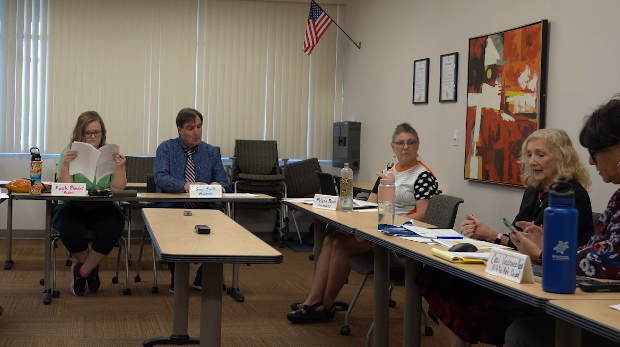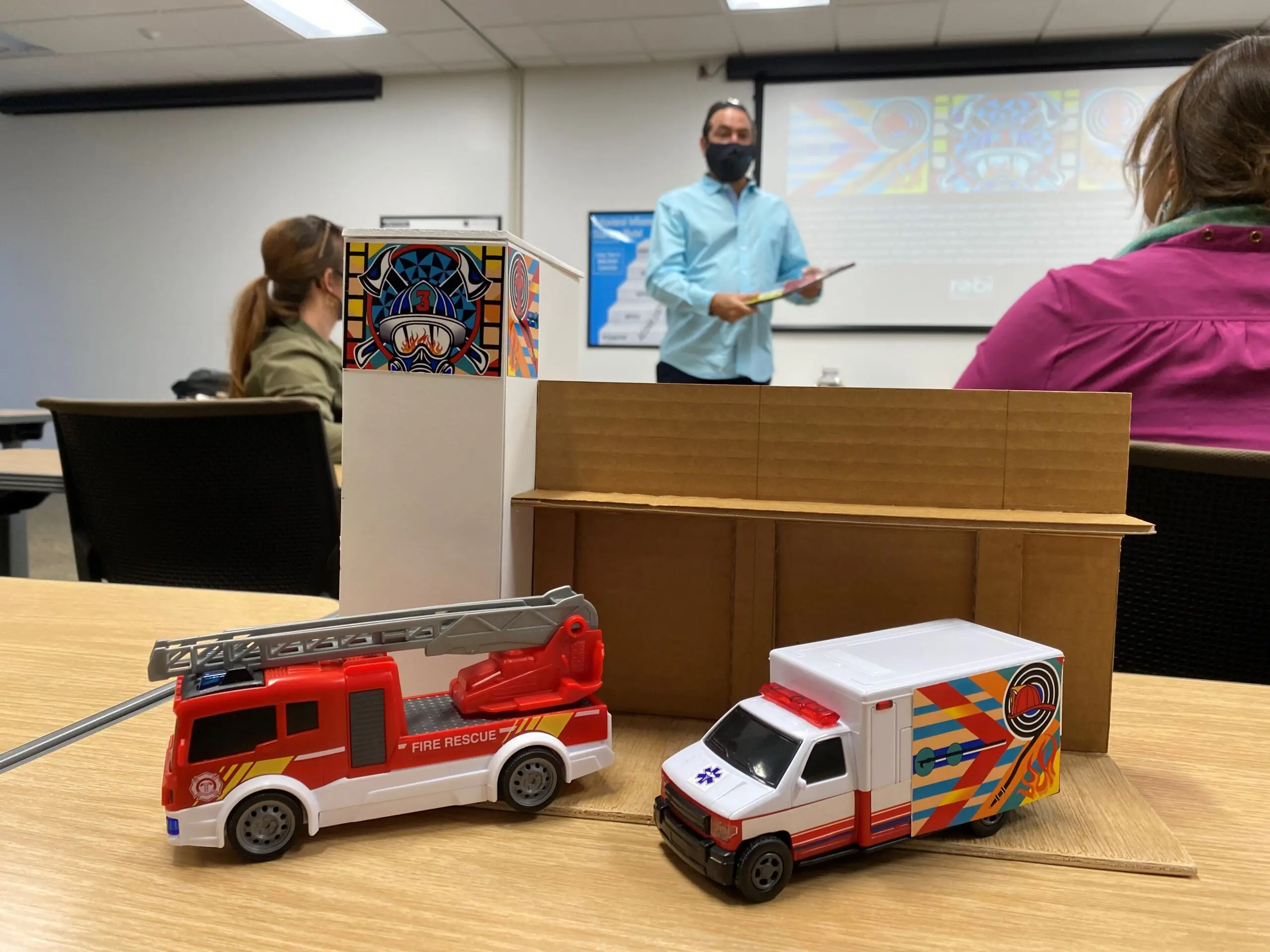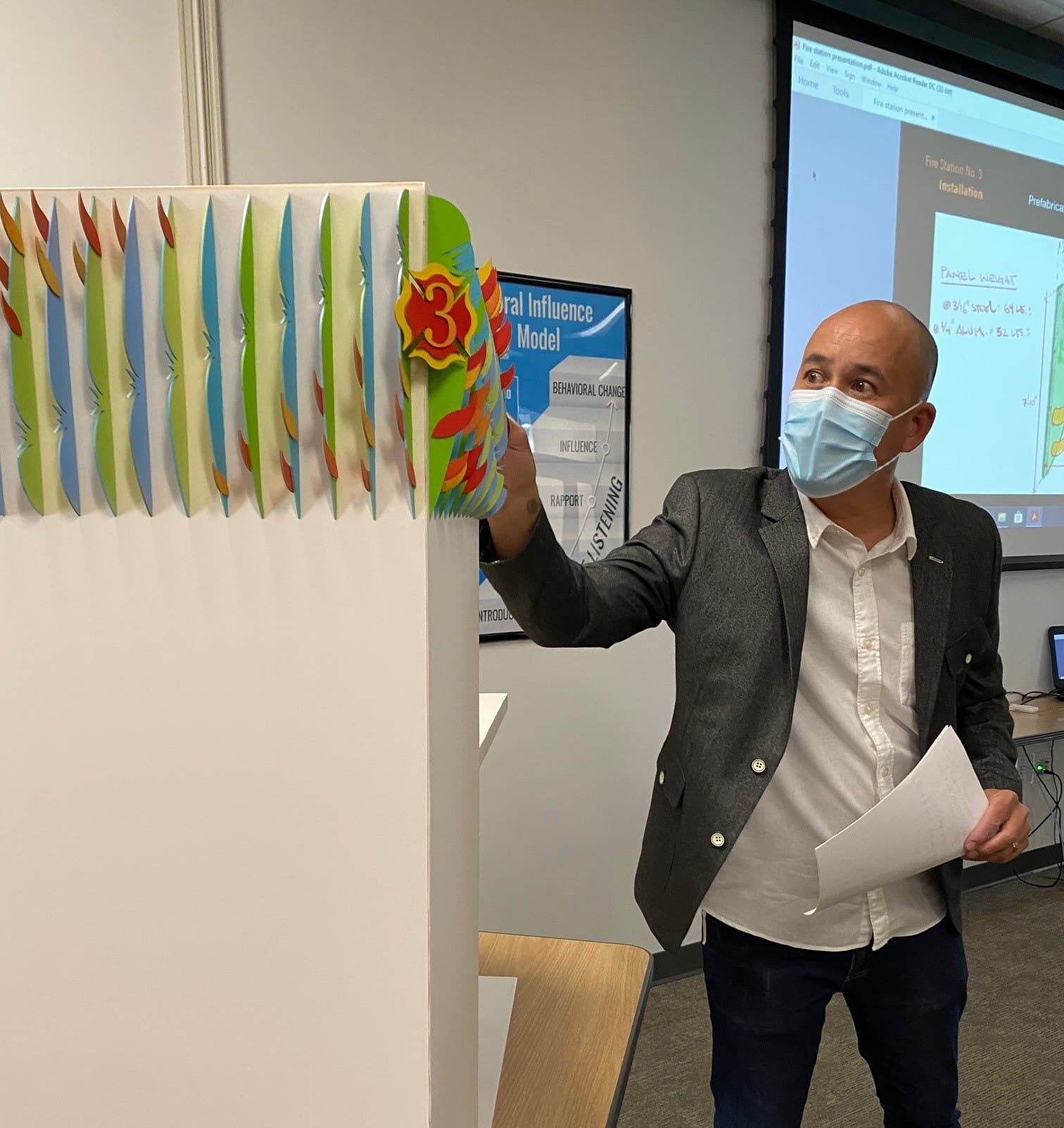It amazes me how many people think that, as Public Art Coordinator, I choose the public art that gets commissioned and installed. In fact, my vote doesn’t count. The artwork I like is often not the artwork that is chosen, which could be a good thing. In hindsight, I don’t regret the giant tarantula that was not chosen for the children’s park project. I’m exaggerating, but truthfully, the choices made are usually the best fit for the project.
How do we choose the artists who design and install our public art? The most common process we use, which is outlined in the Las Cruces Public Art master plan, is by selection committee. The committees are made up of members from the City Art Board, representatives from related City Departments, members of the community, and other stakeholders.
The selection committees are responsible for vetting the applications for the Call for Artists/Request for Qualification. They score each application to narrow the field, then review the top scoring submissions to decide who they will invite to do in-person presentations. Their selection is based on the criteria outlined in the Call for Artists.

Choosing artwork is not easy. If we’re lucky, one design proposal will rise above the rest, and all will agree that that is the one to go with. That’s rare though because there is so much talent out there. And art is so subjective.
We receive some amazing and creative designs. Sometimes, one design will have something that is perfect and another that’s not, or you get two designs that you can’t decide which is best because they are both so good. A few times, we have seen a design that is quite exceptional but not right for the venue or environment. Or sometimes, the artist is so talented and personable that you really want to give them a chance, but the proposal is not quite up to standard.
Less experienced artists should know that if they come into a presentation and blow the committee away with their presentation, they have a very good chance of winning the commission over more experienced artists. The same holds true of an artist who has an impressive resume but doesn’t do well speaking in front of people. They may still win the commission if the committee loves their work. Ultimately, the committee’s main goal is to find the design and artist who best meets the greater vision for the project.

The selection committee invites the top three or more artists to present their proposal which includes the design concept, budget, timeline, maintenance plan, etc. in a public meeting setting. Each artist presents their concept for the project individually without their competition present. This is an opportunity for the committee to get to know the artist better, ask any questions, and get a visual of what the artwork will look like.
The public is welcome to attend the presentations and ask their own questions or give input. Schedules for presentations are posted on the website and City Calendar. After all of the presentations, the committee discusses each proposal and makes their selection, which they then recommend to the City Art Board. The City Art Board then approves their recommendation or sends it forward to City Council for approval. (Public art contracts over $75,000 go to City Council for final approval.)

The advantage of having a committee to select the art design and artist is that they provide checks and balances to keep scoring fair. There is a matrix that is used to score each presentation, but there is also general impression of the artist and their history of past projects or work that carry some weight.
I would encourage anyone who is interested in the process or wants to take an active role in choosing the City’s public art to volunteer to serve on a selection committee. It’s also a great exercise for artists to see that side of the commission process for their presentation purposes. We are always looking for people to serve so please let us know if you are interested!


